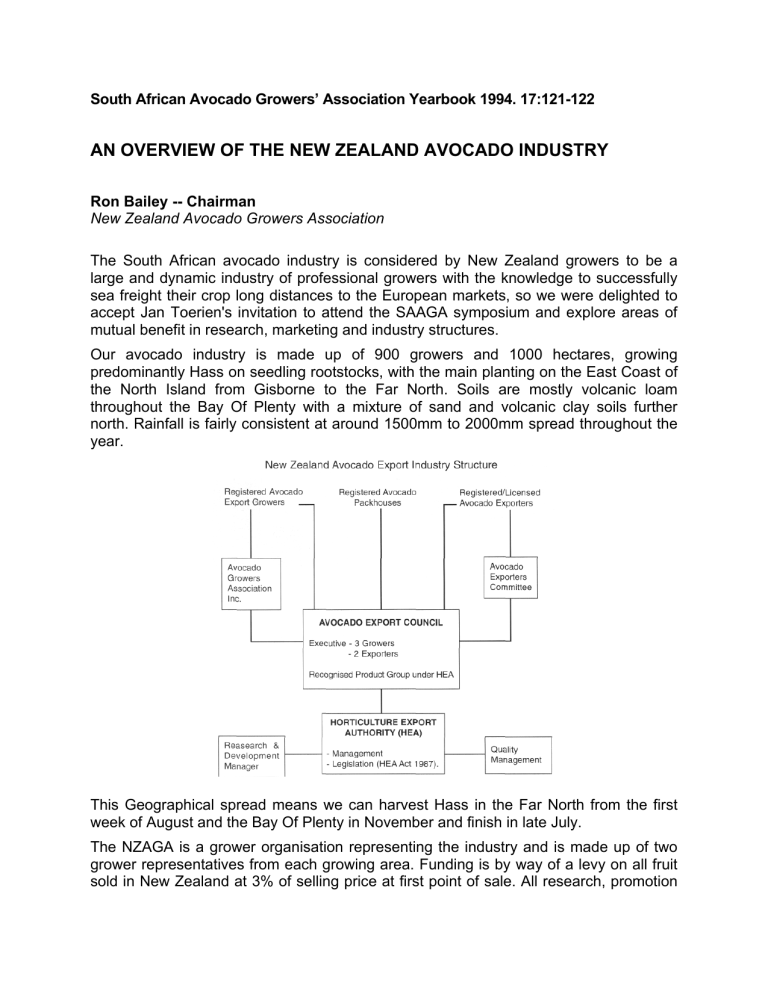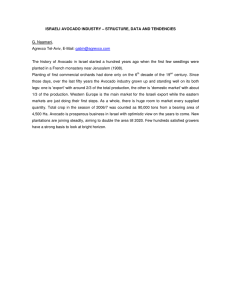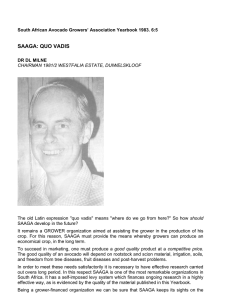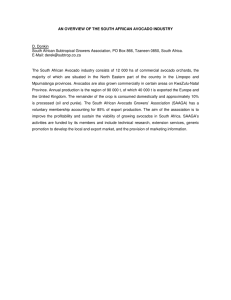AN OVERVIEW OF THE NEW ZEALAND AVOCADO INDUSTRY

South African Avocado Growers’ Association Yearbook 1994. 17:121-122
AN OVERVIEW OF THE NEW ZEALAND AVOCADO INDUSTRY
Ron Bailey -- Chairman
New Zealand Avocado Growers Association
The South African avocado industry is considered by New Zealand growers to be a large and dynamic industry of professional growers with the knowledge to successfully sea freight their crop long distances to the European markets, so we were delighted to accept Jan Toerien's invitation to attend the SAAGA symposium and explore areas of mutual benefit in research, marketing and industry structures.
Our avocado industry is made up of 900 growers and 1000 hectares, growing predominantly Hass on seedling rootstocks, with the main planting on the East Coast of the North Island from Gisborne to the Far North. Soils are mostly volcanic loam throughout the Bay Of Plenty with a mixture of sand and volcanic clay soils further north. Rainfall is fairly consistent at around 1500mm to 2000mm spread throughout the year.
This Geographical spread means we can harvest Hass in the Far North from the first week of August and the Bay Of Plenty in November and finish in late July.
The NZAGA is a grower organisation representing the industry and is made up of two grower representatives from each growing area. Funding is by way of a levy on all fruit sold in New Zealand at 3% of selling price at first point of sale. All research, promotion
and administration as it relates to the New Zealand market are funded out of this levy.
About half of New Zealand's total production is exported with around 350,000 trays going to Australia in what is their off season of November to March. With this heavy reliance on one market and the "entrepreneurial flair" of fifteen exporters, it was essential to manage the development of our export markets.
In 1989 the industry put in place the Avocado Export Council under the Horticulture
Export Act. This has enabled us to register exporters, growers and pack houses, develop marketing strategies, quality management and Industry Flow Plans and give the industry a secure funding base by setting levies of 60 cents a tray on all exported trays.
With plantings increasing the extra volumes cannot all be absorbed by one market and
still maintain a realistic price for out growers. Our market development strategy is to increase and develop sales into the Asian markets and reduce our reliance on Australia.
As New Zealand and South African production seasons are complimentary I believe there is potential for our exporters to ensure there is a good quality avocado on supermarket shelves throughout Asia for 12 months of the year.
Thank you for the opportunity to visit your country and hospitality shown to us by
SAAGA and the people at Westfalia and I look forward to our two Associations developing the opportunities that this trip has created.





